
Heartwarming Encounters:Tedy Necula’s Beside me (Coborim la prima)
 17 min
17 min
Heartwarming Encounters:Tedy Necula’s Beside me (Coborim la prima)
There are many thoughts about tragedy and the solitude of the human condition, but one that stuck with me most is a quote from the novel Einstein’s Dreams by Alan Lightman: “The tragedy of this world is that everyone is alone. For a life in the past cannot be shared with the present.” This metaphysical quote can probably interpreted in numerous ways. What I take from it is the awareness that we tend to focus mostly on the here and now to meet life’s challenges. Tragic or jolting events, however, disrupt the normal fabric of our experience of space and time, often compelling us to come together.
This is the scenario envisioned by the young Romanian movie director and inspirational speaker Tedy Necula in his 2018 film Beside Me (Coborim la prima), launched in 2019 at the Singapore Film Festival. The movie imagines (fictional) accidental encounters between various groups and individuals when a subway train in Bucharest suddenly gets stuck between the stations 1 Mai and Grivita. The timing of this glitch is significant: it happens the day after a (real) fire at the nightclub Club Collective (Colectiv) in Bucharest claimed the lives of dozens of people. While the fact that the train stops may be accidental, it takes deliberate efforts on the part of these strangers to create human connections and unite in the face of a tragic event that touched so many lives. In this cinematic thought-experiment, Necula imagines people experiencing a range of emotions, from the initial callous indifference of groups of young people to the unimaginable suffering of parents who grapple in sorrow and disbelief with the news that their son has perished in the fire. By the time the subway train is repaired and gets moving again, each individual is transformed by his or her interactions with others.
The Club Collective Fire
While this scenario is fiction, the Club Collective fire was all too real, sparking protests and political upheaval in Bucharest and eventually throughout the country. Considered one of the most catastrophic events in recent years in Romania, this accidental fire engulfed within the span of a few minutes the Bucharest nightclub, Club Colectiv, on the evening of October 30, 2015, killing 64 people and severely injuring 146 others. The fire was accidentally started by pyrotechnic displays setting aflame the highly flammable polyurethane acoustic foam used for soundproofing during a free packed concert given by the metal band Goodbye to Gravity. Only one of the band members survived.
After the fire, there was a public outcry. People took to the streets to protest layers of political corruption. The media stoked the unrest, demanding answers for people’s legitimate questions: Why weren’t fire codes properly enforced at the nightclub? Why weren’t there enough fire exits in the club? Why were pyrotechnic displays allowed in a club with inexpensive polyurethane acoustic foam, which was known to be highly flammable? How was a club with a capacity for about 80 people allowed to host an event packed with 400 individuals? This tragedy sent ripples of discontent throughout the country. The fire wasn’t viewed as an isolated accident but rather as a symptom of a wide-ranging political corruption: a system where bribery and political connections trumped observance of the rules and codes that protect the public welfare.
People’s sense of outrage was exacerbated by the fact that hospitals in Bucharest were not prepared to treat so many people with severe burn injuries—as it turned out, also largely due to corruption. Many of the victims of the fire died days or even weeks later, not from the burns themselves, but from complications due to bacterial infections in local hospitals. In wake of this catastrophe, there were inquiries into the numerous code violations of the nightclub—and who was responsible for them—as well as into the reasons why so many victims with apparently non-life-threatening burns ended up perishing in local hospitals. This fire, the deadliest in recorded Romanian history, sparked so many protests in Bucharest and throughout other cities in Romania that it even precipitated the resignation of Prime Minister Victor Ponta in November 2015, whose hold on power was already tenuous before this tragic event.
Collective (2019): The Documentary
The aftershock of the Club Collective fire and subsequent inquiries into how local hospitals mishandled the victims revealed the deep-seated corruption of the Romanian medical system. This has been thoroughly unmasked for the entire world to see by the award-winning documentary Collective (2019), directed by Alexander Nanau, which follows the tracks of journalist Calin Tolontan and his colleagues from Sports Gazette (Gazeta de Sport) as they discover that the disinfectant provided to dozens of hospitals throughout the country by the company Hexi Pharma were watered down and proved ineffective in controlling bacterial infections. Upon interviewing hospital staff willing to disclose information, the journalists discover that dozens--if not hundreds--of hospital employees throughout the country were complicit in this corruption, particularly politically appointed hospital managers bribed by Hexi Pharma. One of the most shocking scenes of this documentary shows maggots crawling in burn victims’ open wounds. One of the doctors who spoke frankly to the investigative journalists states how inhumanely these victims were treated, as nurses would callously place sheets over their faces as one does over the deceased in order to avoid seeing their wounds and witnessing their suffering.
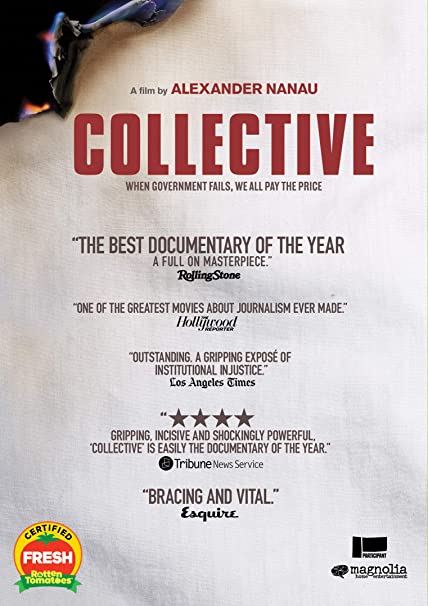
The documentary, released on September 4, 2019 at the Venice Film Festival, won critical acclaim and numerous awards, including Best European Documentary at the 33rd European Film Awards as well as the Peabody Awards. But its major upheaval was not artistic but pragmatic, bringing about an (at least temporary) improvement in the Romanian healthcare system by obliging the entrenched Minister of Health, Patriciu Achimas-Cadariu, to resign. His replacement was Vlad Voiculescu, a young politician whose honesty and initiative, the documentary revealed, were challenged by the countless obstacles of entrenched corruption.
Beside Me
Tedy Necula’s film, which predates the documentary, doesn’t offer a factual expose of the Club Collective fire and the institutionalized corruption in the Romanian political and medical systems. Rather, the young director focuses on the unexpected positive effects of this tragic event. He envisions how incidental encounters in the wake of this tragic fire that shook the nation can unite perfect strangers obliged by circumstances—a subway train that breaks down—to get to know each other.
For Necula, finding some positive aspects in negative situations is a recurring motif, both in his personal life and in his professional endeavors. He was born with tetraparesis, an illness that causes some limbs to lack voluntary motor control while other limbs function more or less normally. This disability, however, never impeded him from pursuing his goals. On the contrary, it gave him a positive life mission. His own experiences with tetraparesis help him empathize with others and inspire his roles as a motivational speaker for companies and as a film director.

In an interview on ceec.org (https://ceec.org.sg/blog-post-1/), Necula states that since an early age “my approach has been always to find the positive things in any drama.” When invited to speak on the topic of handicaps on May 5th (the International Day of Protection of Persons’ with Disabilities Rights) before the Romanian Parliament, Necula was asked to define “handicap” for them. The politicians probably expected his insights into a legal definition of the term, the basis of future codes. What the young man stated, however, took them by surprise: “I said a handicapped person is anyone who says, ‘I can’t’, even just one time.” The entire Parliament erupted in applause. This broad definition, which offers no help with codes, underscores the underlying vulnerability of our human condition. We each carry the burden of our own fears—our real disabilities--and each of us can strive to overcome them or, when that’s not possible, to live positive and meaningful lives with them.
Necula emphasized a similar universalist message when speaking to the journalist Roxana Grosu in an interview with Wallstreet.ro. When she asked him “What would you advise other individuals with disabilities?” he responded: “I can’t advise people with disabilities; I can advise people in general. True disabilities, which can set us back, are the emotional ones, of competence and ability to adapt to new situations. My advice is to be open to opportunities, to speak about yourself, about what you are doing.”(https://www.wall-street.ro/articol/Careers/252798/tedy-necula-regizorul-cu-tetrapareza-care-castiga-250-000-de-euro-pe-an.html)
The young director practiced this motto of making something positive out of something that may be negative not only in the themes of his film Beside me, but also in managing to create a quality film with great dialogue and actors perfect for their roles while operating on a shoestring budget of only 120,000 Euros. The film is so rich in subtle nuances that it bears watching more than once. The devil is in the details. This saying is quite literally true in an amusing scene of the film where the businessman/Lothario character, played by Emilian Oprea, answers his cellphone to speak to his mother-in-law, identified on his cell as “Mama Satan”, who is frantically reminding him that his wife is in the hospital about to give birth to his child. The player’s stale pickup lines and flirtatious banter with a simpleminded middle-aged woman with a thick Moldavian accent (Sveta) are also priceless: and much better appreciated by those who understand Romanian and the numerous double entendre remarks of their comical dialogue.
Yet there’s also a serious side to this sometimes farcical interaction. We see how the opportunistic seducer seeks to flee the burden of heavy personal and professional “thankless” responsibilities; while his prey, as we later find out, has damaged her relationship with her daughter (who turns out to be on the same subway) by falling for various pickup artists and bringing into their lives a long series of no-good “dads”. As lighthearted and funny as their dialogue may be, it’s clear as we move to the daughter’s dialogue on the train that their lives are damaged by the mother’s naiveté and poor judgment. Each narrative, and each life story, is inextricably interwoven with another. The film begins with the synecdoche of Sveta’s feminine hand identified only by her bright red nail polish as she attempts to touch the shoulder of a young woman with long dark hair who, we later find out, is her angry and emotionally damaged daughter.
Yet things are not always as they initially appear to be in life or cinema. Beside me delves deeper into human psychology to sketch positive transformations in people’s lives. Throughout the movie the daughter herself flirts, in a more sarcastic and cynical way than her ingenuous mother, with a young man with a pointy beard. Each of them interprets prejudicially superficial signs about the other. He observes that she’s wearing dark clothes and heavy black eyeliner and pegs her as an art student and a spoiled rebel mad at her parents. She notices his trendy clothes and pointy beard and assumes he’s a frivolous bar fly always ready to party. Both are superficially right in their assumptions yet fundamentally wrong on a deeper level. He does indeed work at a bar to make a living, but he doesn’t spend his life partying like she assumed. She is an art student rebelling against her mother, as he surmised, but her anger is justified. Her mother brought a long string of questionable characters into their lives, tainting her childhood.
In fact, the main message of this film is that appearances can deceive and lead to prejudicial first impressions. People need to dig deeper into each other’s lives through open-minded communication—fostered by this accidental scenario—in order to find out just how much we have in common. Nowhere is this message more evident than in the interaction between a single mother (a nurse) of a young boy (Thomas) who seems to have Asperger Syndrome and a former prisoner. The boy, devoid of social prejudice due to his young age and psychological condition, looks at everyone with fresh eyes. He experiences a panic attack when the train stops suddenly and runs frantically towards a young man that, as we later find out, was a former prisoner. The man calms him down by giving him two toy swans that he himself had carved. The mother engages in conversation with that friendly stranger, not knowing that he had spent seven years in prison for violently assaulting two men who were about to attack his dad. The former prisoner, however, seems to have overcome his anger issues and acts kindly to Thomas and his mother. But once he discloses to her that he was recently released from prison, the mother abruptly changes her attitude towards him and turns to leave. Two characters on the subway train seem to see people beyond initial appearances: Thomas and a didactic priest. Their main role in the film is to bring the travelers together, dislodging their initial prejudices and encouraging, each in his own way, their interpersonal connections.
The accidental congregation on the subway train is filled with characters that mirror realistic situations—the pickup artist, the gullible woman, the rebellious daughter, the former prisoner, the sick elderly couple, the sensitive modern dancer, the bankrupted couple about to divorce--only to later subvert stereotypes about them. While I don’t have the space here to discuss all of them, I’d like to mention one last example from the film, which abounds with life stories. A middle-aged couple finds itself in grave financial trouble. The husband wasted all their life savings lured by shysters into making fraudulent investments; the wife is at the end of her rope, secretly planning to leave him. Bad financial karma seems to follow the husband around. In one of the very first scenes of the movie, before the husband even boards the subway train, we see a hand filching his wallet from his back pocket. In the end, however, the movie affords the duped husband a certain dignity. We find out that he knew that his wife was about to divorce him and grants her this wish, knowing that leaving him would be best for her. Once the train is fixed and everyone exits the subway, viewers are in for another unexpected twist: it is Thomas’s mom, the nursing assistant who helped an ill elderly man on the train, who was the thief of the bankrupted man’s wallet, not the prisoner or any of the young punks, as one might expect. This series of slice-of-life sketches, orchestrated into surprising and heartwarming encounters, reveals the positive connections that human beings can create with one another in circumstances where they are obliged to communicate and give each other a chance.









 English
English
 Français
Français
 Deutsch
Deutsch
 Italiano
Italiano
 Español
Español



 Contribuisci
Contribuisci


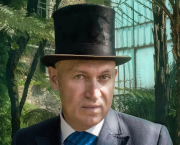



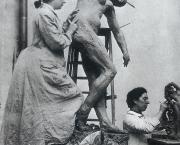



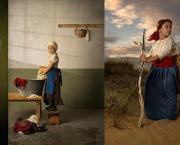

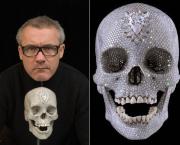





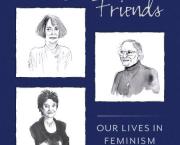



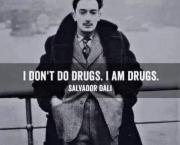







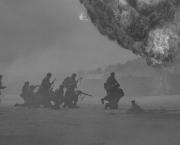














 Puoi sostenere i tuoi scrittori preferiti
Puoi sostenere i tuoi scrittori preferiti





